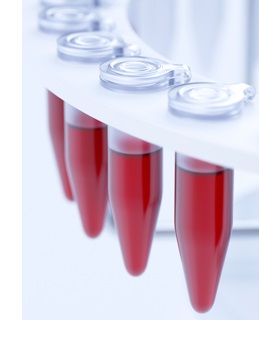Ask The Expert: The Questions About Erectile Dysfunction You Were Scared To Ask
About the Problem
Erectile dysfunction means incapacity to achieve and preserve erection sufficient for satisfactory coitus. Earlier this disorder was known under the name “impotency”. But nowadays this term is used seldom and is considered to be outdated. Erectile dysfunction is characteristic for men after sixty years of age, although such cases may occur among young men as well. This condition practically excludes fully-realized sex, but it should be borne in mind that we may talk of ED only in case it takes place not once, but in a quarter of all intimate dates.
In order to treat the disease, a patient should arm himself with patience. First of all, he should find out the cause of ED and ascertain characteristic symptoms. The final diagnosis must be made by a specialist based on test results. Afterwards, a therapy or surgery will be conducted.
A Bit of Anatomy and Physiology
Normal sexual excitement is caused by the following mechanisms:
- Reflexory – occurs in the process of direct contact with penis;
- Erotic – acts via nervous system and cerebrum enabling the blood circulatory system.
Penis consists of one spongy and two cavernous bodies which have their own system of blood vessels. They are not interconnected and are filled with blood through their own artery. During sexual intercourse, arteries get wider, whereas veins – narrower. Afterwards, lacunes of penis accumulate a large amount of blood causing erection. Penis tissues appear in a so-called state of ischemia, since they do not receive new portions of blood.
Types of Pathology Manifestation
ED types have several direction allowing a doctor to examine in details the causes of sexual attraction decrease and prescribe corresponding therapy:
- Psychogenic ED. It is caused by various stresses, overwork, difficult relations with a partner. The base point of pathology is low response of penis cavernous tissue to action of neurotransmitters of erection. In this case a man has morning erection preserved, whereas coitus is difficult.
- Organic ED. This type of erectile dysfunction is characterized by constant enhancement of symptoms connected with development of inner diseases. A man should treat the main pathology. Some medications may also become a cause of erectile disorder. This type is characterized by absence of night erections and sudden loss of penis rigidity. But with all this, libido and ejaculaiton are preserved.
- Neurogenic – injuries of spine, peripheral nerve diseases, medulla and cerebrum issues. Difficult impulse conduction to a cavernous body.
- Arteriogenic – atherosclerosis, age, vascular modifications, traumas, smoking, hypertension, diabetes.
- Venogenic – cavernous tissue fulfills its functions badly, Peyronie’s disease, exhaustion.
- Hormonal – very often it is caused by diabetes affecting changes in cavernous bodies and vessels.
- Cavernous failure – extra- and intracellular changes in cavernous bodies.
- Mixed ED. The causes of this erectile dysfunction are quite broad.
- Age-related ED – due to physiological changes in organism and systemic diseases.
According to statistics, 20% of ED cases are psychologic factors. In other cases, pathology signalizes of serious inner diseases which cannot be treated domiciliary. Erectile dysfunction requires medical attendance.
Stages of Erectile Dysfunction
This pathological condition is divided into the following types:
- Primary (congenital). Sexual intercouse has never taken place (rarely if ever).
- Secondary. It is characterized by the fact that there were no sexual issues up to the point, but then they started occurring.
Clinical Implications
Generally presence of some small deviations in case a penis is moderately firm does not prevent from leading normal intimate life. Also, it is not considered to be a pathological condition if erectile dysfunction occurs because of strong alcohol or drug intoxication, since it is physically appropriate and shouldn’t cause concern. ED treatment in this case lies in quitting obsessive habits.

ED symptoms are manifested in the following form:
- Symptoms of libido decreasing (absence of sexual drive because of bad relations between partners, hormonal imbalance, establishing of lower levels of testosterone).
- Symptoms of vascular disorders – penis softness, insufficient erection.
- Symptoms of bad ejaculation and orgasm (anorgasmia). This symptom is mainly connected with psychologic issues.
Development Mechanism
Penis tissues undergo changes under the influence of various factors, and conjunctive tissue develops completely or partially substituting cavernous cells in elastic tissues of cavernous bodies. The causes of sclerotherapy may be long-term injections in the area of sexual organ, long-lasting sexual intercourses, injuries or priapism in the past medical history manifested as a long erection non-caused by sexual excitement. As a result, penis cells do not get important quantity of oxygen because of vascular supply absence.
Erectile Dysfunction Testing
Due to the fact that ED may be caused by any aspect, a doctor may use several tests. The first test is history taking. You should tell everything of concern to a doctor to make a correct aspect of the disease.
 After consultations, you will pass the following test:
After consultations, you will pass the following test:
- General blood analysis allowing to expose some pathologic conditions of organism including anemia which is able to cause erectile dysfunction;
- Kidneys and liver function tests allowing to exclude impotency caused by organs disorders.
- Cholesterol level test. Its increased level gives grounds to assume atherosclerosis and blood supply disorder to pelvic organs.
- Thyroid Profile. One of thyroid enzymes is responsible for production of sexual hormones. Their deficit leads to ED development.
- Hormones blood analysis shows testosterone level.
- Examination of the urine allows to trace the levels of testosterone, protein and glucose.
- Duplex ultrasonography screening. This test is considered to be the best for ED exposure. It allows visualizing the blood circulation in sexual organs area and condition of its vessels.
- Bulbocavernous reflex. This is a testing of penis nerve endings for sensitivity.
- Nocturnal tumescence test.
- Biothesiometry. The estimation of penis sensitivity is conducted in order to exclude nerves damage.
- Injection of vasoactive drug.
- Dynamic infusion cavernosometry allowing to diagnose venous flux.
- Cavernosography and arteriography.
- PSA-test is a tumor marker excluding prostate carcinoma.
Methods of Erectile Dysfunction Therapy
Nowadays there are two principle ways of erectile dysfunction therapy.
- Surgery
- Conservative remedies (medicinal products, natural home remedies, vacuum equipment, vasoactive drugs, etc.).
Pharmaceutical treatment completely depends on the nature of disorders which underlie erectile dysfunction:
- Disease of internal secretions. In this case a therapy with tablets and gels will be the most beneficial.
- Psychological problems. Mild form of ED caused by overwork requires a sufficient rest to become normal. Good results are achieved with the help of psychologist. Sometimes it is better to use combined therapy: psychosexual counselling along with medicinal drugs.
- Neurological issues. Their treatment is aimed at elimination of the primary disease.
- Anatomic disorders. Abnormal penis development may be corrected only by means of surgery. Prosthetic care of penis may be the only possible way to treat erectile dysfunction.
Pharmaceutical goods are one of the most efficient way of ED treatment.
- Tablets for peroral intake. There are several types of tableted remedies, such as Cialis, Levitra and Viagra which differ by the time of action and side-effects.
- Intracavernous injection. They are indicative in cases when tableted forms are counter-indicative for a variety of reasons.
- Remedies of various groups, such as adaptogens, vascular and sedative remedies, biostimulators, vitamins, phytopreparations.
In case this medicamentous treatment was not effective, a doctor will offer the alternative ways of therapy.







